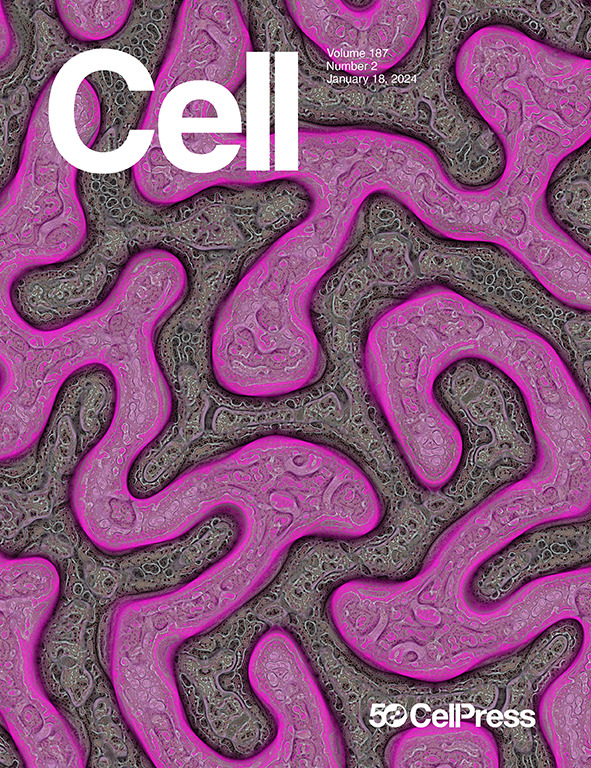CXCL12驱动不同人群冠状动脉解剖结构的自然变异
IF 45.5
1区 生物学
Q1 BIOCHEMISTRY & MOLECULAR BIOLOGY
引用次数: 0
摘要
冠状动脉有一种特殊的分支模式,对心肌充氧至关重要。在人类中,关于左下/左后心脏的灌注,冠状动脉解剖结构有自然的变化,它可以从右动脉树、左动脉树或两者分支——一种被称为冠状动脉优势的表型。利用6万名不同血统的美国退伍军人的血管造影数据,我们进行了冠状动脉显性的全基因组关联研究,揭示了中度遗传性并确定了10个显著位点。在欧洲和非洲血统的队列中,最强的关联发生在CXCL12附近,下游分析暗示对CXCL12表达的影响。我们发现CXCL12在建立优势地位时就在人类胎儿心脏中表达。小鼠中减少Cxcl12会改变冠状动脉优势,并导致间隔动脉远离Cxcl12表达域发育。这些发现表明,CXCL12可以调控人类冠状动脉,通过靶向发育途径为“医学血运重建”铺平道路。本文章由计算机程序翻译,如有差异,请以英文原文为准。

CXCL12 drives natural variation in coronary artery anatomy across diverse populations
Coronary arteries have a specific branching pattern crucial for oxygenating heart muscle. Among humans, there is natural variation in coronary anatomy with respect to perfusion of the inferior/posterior left heart, which can branch from either the right arterial tree, the left, or both—a phenotype known as coronary dominance. Using angiographic data for >60,000 US veterans of diverse ancestry, we conducted a genome-wide association study of coronary dominance, revealing moderate heritability and identifying ten significant loci. The strongest association occurred near CXCL12 in both European- and African-ancestry cohorts, with downstream analyses implicating effects on CXCL12 expression. We show that CXCL12 is expressed in human fetal hearts at the time dominance is established. Reducing Cxcl12 in mice altered coronary dominance and caused septal arteries to develop away from Cxcl12 expression domains. These findings indicate that CXCL12 patterns human coronary arteries, paving the way for “medical revascularization” through targeting developmental pathways.
求助全文
通过发布文献求助,成功后即可免费获取论文全文。
去求助
来源期刊

Cell
生物-生化与分子生物学
CiteScore
110.00
自引率
0.80%
发文量
396
审稿时长
2 months
期刊介绍:
Cells is an international, peer-reviewed, open access journal that focuses on cell biology, molecular biology, and biophysics. It is affiliated with several societies, including the Spanish Society for Biochemistry and Molecular Biology (SEBBM), Nordic Autophagy Society (NAS), Spanish Society of Hematology and Hemotherapy (SEHH), and Society for Regenerative Medicine (Russian Federation) (RPO).
The journal publishes research findings of significant importance in various areas of experimental biology, such as cell biology, molecular biology, neuroscience, immunology, virology, microbiology, cancer, human genetics, systems biology, signaling, and disease mechanisms and therapeutics. The primary criterion for considering papers is whether the results contribute to significant conceptual advances or raise thought-provoking questions and hypotheses related to interesting and important biological inquiries.
In addition to primary research articles presented in four formats, Cells also features review and opinion articles in its "leading edge" section, discussing recent research advancements and topics of interest to its wide readership.
 求助内容:
求助内容: 应助结果提醒方式:
应助结果提醒方式:


